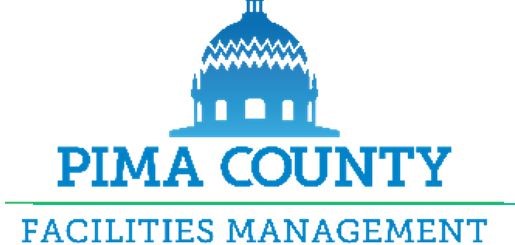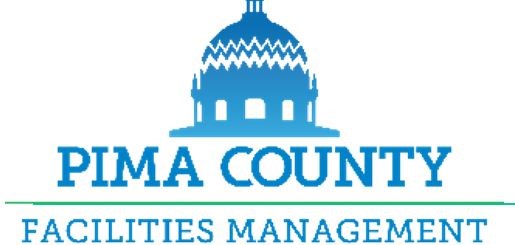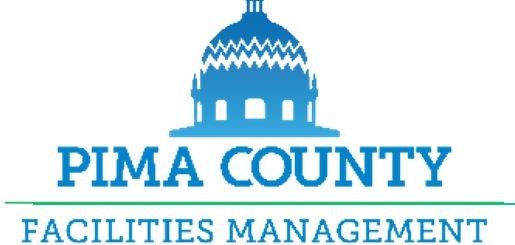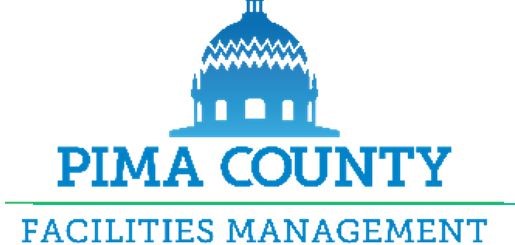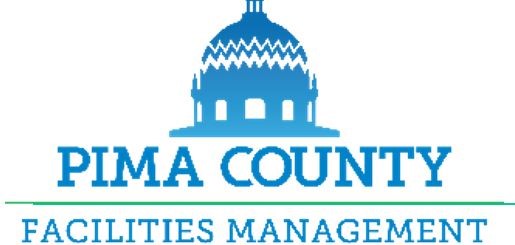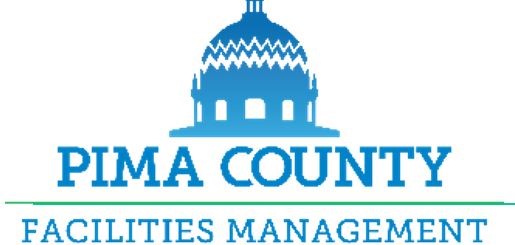Title Page
-
Site conducted
-
Conducted on:
-
Audit Type:
-
***NO RESPONSE NECESSARY*** OR ***PLEASE RESPOND TO FACILITIES MANAGEMENT - SAFETY AND HEALTH LOSS CONTROL OFFICER BY***
-
Location:
-
Prepared by:
-
Department Site Personnel
1.0 Employee OSHA (publication 3165) and U.S. Department of Labor Postings: 29 CFR 1903.2 and Pima County Medical Clinics
-
Are the OSHA (publication 3165) and US Department of Labor Postings posted and available for the employees to read?
-
Is the Pima County Workers Compensation Contacts and Medical Clinics information posted?
30.0 ELECTRICAL
-
30.1 EXTENSION CORDS/ELECTRICAL STRIPS - MANUFACTURER'S GUIDELINES (29 CFR 1910.303(b)(2)); Are extension cords and electrical strips used in accordance with manufacturer's guidelines?
-
30.2 EXTENSION CORDS/ELECTRICAL STRIPS - DAISY CHAINING (29 CFR 1910.303(b)(2)); Are electrical cords and electrical power strips free from daisy chaining?
-
30.3 EXTENSION CORDS NOT USED AS PERMANENT WIRING (29 CFR 1910.305(g)(1)(iv)(A)); Are extension cords used only for immediate use and not as permanent wiring?
-
30.4 ELECTRICAL CORD DAMAGE AND DEFECTS (29 CFR 1910.334(a)(2)(ii)); Are all portable cord and plug connected equipment and extension cords free from damage and defects such as damage to the outer jackets (insulation) or missing grounding pins?
-
30.5 ELECTRICAL CORD STRAIN RELIEF POINTS (29 CFR 1910.305(g)(2)(iii)); Are all strain relief points free from exposed electrical wires?
-
30.7 UNUSED OPENINGS IN ELECTRICAL OUTLETS, BOXES, CABINETS (29 CFR 1910.303(b)(7)(i) and 29 CFR 1910.305(b)(1)(ii)); Are unused openings in electrical outlets, boxes, equipment casings, cabinets closed to prevent exposure and accidental entry?
-
30.8 STORAGE 36 INCHES FROM ELECTRICAL PANELS (29 CFR 1910.303(g)(1)(i)(A)); Is storage maintained 36 inches from electrical panels?
-
30.10 GFCI PROTECTION OUTDOORS FOR CORD AND PLUG CONNECTED EQUIPMENT (29 CFR 1910.304(B)(3)(ii)(A)); Is GFCI protection provided when an employee is outdoors and operating or using cord and plug connected equipment supplied by 125-volt, 15, 20 or 30 amp circuits?
-
30.13 WATERPROOF RECEPTACLES FOR OUTDOOR AND DAMP LOCATIONS (29 CFR 1910.305(j)(2)(v)); Are waterproof receptacles installed (with weather - tight gaskets in place) in outdoor locations or in other damp locations?
-
30.15 ELECTRICAL PANELS LABELED WITH VOLTAGE, CURRENT AND PROTECTIVE CLOTHING REQUIREMENTS (29 CFR 1910.303(e)(1)(ii); NFPA 70E 130.5(H)); Are labels providing voltage, current and protective clothing requirements posted and legible, on the outside of electrical panels?
-
30.16 DURABILITY OF LABELS ON ELECTRICAL PANELS 29 CFR 1910.303(e)(2) Is/are the label(s) on the electrical panel made of a material of sufficient durability to withstand the environment involved?
-
30.17 LAMP FIXTURES OR GUARDS (29 CFR 1910.305(a)(2)(ix)); Are all lamps used for general illumination protected from accidental contact or breakage by a suitable fixture or guard?
-
30.19 LOTO PERFORMANCE REQUIREMENTS (29 CFR 1910.147(a)(1)(i)); Does the location follow minimum LOTO performance requirements for the control of hazardous energy such as the unexpected energization or startup of the machines or equipment, or the release of stored energy?
-
30.20 OTHER "OBSERVED" ELECTRICAL CONDITIONS
40.0 EMERGENCY EXITS
-
40.1 EXIT ROUTES FREE AND UNOBSTRUCTED (29 CFR 1910.37(a)(3)); Are exit routes free and unobstructed?
-
40.2 EXITS CLEARLY VISIBLE AND MARKED "EXIT" (29 CFR 1910.37(b)(2)); Are exits clearly visible and marked by a sign reading "Exit"?
-
40.3 "EXIT" SIGNS ILLUMINATED (29 CFR 1910.37(b)(6)); Are all "Exit" signs illuminated by a reliable light source distinctive in color, self-luminous or electroluminescent design?
-
40.4 DOORWAY "NOT AN EXIT" (29 CFR 1910.37(b)(5)); Are doorways that could be mistaken for an exit marked "Not an Exit"?
-
40.5 EMERGENCY LIGHTING TEST (NFPA 101 7.9.3.1.1); Do all emergency lights operate for a minimum of 30 seconds when the test button is pressed?
-
40.6 OTHER "OBSERVED" EMERGENCY EXIT CONDITIONS
70.0 FIRE EXTINGUISHERS
-
70.1 FIRE EXTINGUISHER MOUNTING - LOCATION - IDENTIFICATION (29 CFR 1910.157(c)(1)); Are portable fire extinguishers properly mounted, located and identified so they are readily accessible to employees?
-
70.2 FIRE EXTINGUISHER MONTHLY INSPECTIONS (29 CFR 1910.157(e)(2));
-
70.3 FIRE EXTINGUISHER ANNUAL INSPECTIONS (29 CFR 1910.157(e)(3)); Do fire extinguishers receive an annual inspection?
-
70.4 OTHER "OBSERVED" FIRE EXTINGUISHER CONDITIONS
80.0 FIRE SAFETY
-
80.1 COMBUSTIBLE MATERIAL STORAGE AROUND HEATERS OR HEATING DEVICES (International Fire Code 2012:315.3); Are combustible materials in buildings separated from heaters or heating devices by distance or shielding so ignition cannot occur?
-
80.2 STORAGE CLEARANCE OF 24 INCHES FOR NON-SPRINKLED BUILDING (International Fire Code 2012:315.3.1); Is storage maintained 24 inches below the ceiling in non-sprinkled buildings?
-
80.3 STORAGE CLEARANCE OF 18 INCHES FOR SPRINKLED BUILDING (29 CFR 1910.159(c)(10); International Fire Code 2012:315.3.1); Is storage maintained 18" from sprinkler heads in buildings which have fire sprinkler systems?
-
80.4 EXITS AND EXIT ENCLOSURES FREE FROM COMBUSTIBLE MATERIALS (International Fire Code 2012 315.3.2); Are exits and exit enclosures kept free from storage of combustible materials?
-
80.8 OTHER "OBSERVED" FIRE SAFETY CONDITIONS
90.0 FIRST AID KITS
-
90.1 FIRST AID KIT AVAILABILITY (OSHA 29 CFR 1910.151(b)); If emergency medical services are not in near proximity, are first aid kits available?
-
90.2 FIRST AID KIT SUPPLIES (OSHA 29 CFR 1910.151 (App A)); Are the First Aid Kits fully supplied with unexpired components?
130.0 HAZARD COMMUNICATION
-
130.1 LIST OF HAZARDOUS CHEMICALS AND SDS SHEETS (29 CFR 1910.1200(e)(1)(i); Is there a list of hazardous chemicals known to be present and are the appropriate safety data sheets available to employees?
-
130.2 PROPER CHEMICAL CONTAINER LABELING (29 CFR 1910.1200(f)(6)); Are chemical containers labeled properly?
-
130.3 OTHER "OBSERVED" HAZARD COMMUNICATION CONDITIONS
150.0 LADDER SAFETY
-
150.1 ALL MANUFACTURER/WARNING LABELS LEGIBLE (BEST MANAGEMENT PRACTICE); Are manufacturer warning / information labels (weight capacity, Category, etc.) legible?
-
150.6 LADDERS STORED PROPERLY AND SECURED (BEST MANAGEMENT PRACTICE); Are the observed ladders which are not in use stored properly and secured?
-
150.9 OTHER "OBSERVED" LADDER CONDITIONS
165.0 MATERIAL HANDLING AND STORAGE
-
165.1 STORAGE ISLES AND PASSAGEWAYS KEPT CLEAR AND IN GOOD REPAIR (29 CFR 1910.176(a)); Where mechanical handling equipment is used, are all isles and passageways kept clear and in good repair with no obstruction that could create a hazard?
-
165.2 MATERIAL SECURELY STORED (29 CFR 1910.176(b)); Is all storage material (i.e. Bags, containers, bundles, etc.), stored in tiers shall be stacked, blocked, interlocked and limited in height so that they are stable and secure against sliding or collapse?
-
165.3 MANUFACTURER'S RACK WEIGHT/CAPACITY POSTING (ANSI MH16.1-2012: ANI MH26.c-2007); Do storage racks have the manufacture's rack weight limit/capacity clearly posted?
-
165.4 OTHER "OBSERVED" MATERIAL HANDLING AND STORAGE CONDITIONS
210.0 WALKING WORKING SURFACES: GENERAL REQUIREMENTS - GUARDRAIL SYSTEMS- COVERS FOR HOLES - SIDEWALK SAFETY
-
210.1 GENERAL REQUIREMENTS PLACES OF EMPLOYMENT (29 CFR 1910.22(a)(1)); Are places of employment kept clean and orderly and in sanitary condition?
-
210.2 GENERAL REQUIREMENTS WORKROOM FLOORS (29 CFR 1910.22(a)(2)); Are the floors of every work room maintained in a clean and, so far as possible a dry condition?
-
210.3 GENERAL REQUIREMENTS ACCESS AND EGRESS (29 CFR 1910.22(c)); Does the employer provide, and ensure each employee uses a safe means of access and egress to and from walking-working surfaces?
-
210.6 COVERS FOR HOLES (29 CFR 1910.29(e)); Do all covers for each hole on a walking-working surface (including skylights) meet the requirements in 1910.29(e)?
-
210.7 SIDEWALK SAFETY SIDEWALK ELEVATION CHANGE Are observed elevation changes on sidewalks 1/4" or less?
-
210.9 STANDARD RAILING UNPROTECTED SIDE OR EDGE (29 CFR 1910.28(b)(1)(i) (A),(B),(C)); Are walking-working surfaces with and unprotected side or edge that is 4 feet or more above a lower level protected from falling by one or more of the following: Guard rail systems: Safety net systems or personal fall protection systems?
-
210.10 HAND RAILS AND STAIR RAILS SYSTEMS - Does the height of the stair rail systems meet the requirements of 29 CFR 1910.29(f)(1)(ii)?
-
210.11 OTHER "OBSERVED" WALKING WORKING SURFACES: GENERAL REQUIREMENTS - GUARDRAIL SYSTEMS CONDITIONS
COMMENTS
-
COMMENTS
-
COMMENTS
SIGNATURES
-
Participating Employee from site audited:
-
Participating Facilities Management LCO:
